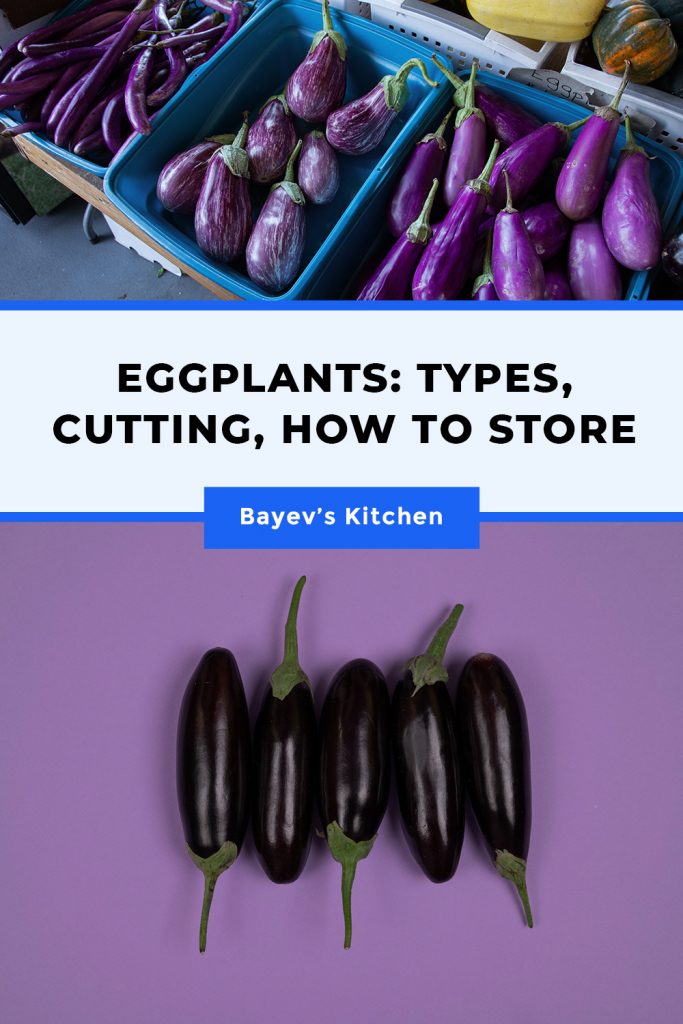History of the Eggplant
Eggplant first appeared in eastern India. Then through Afghanistan and Iran they were brought to Southern Europe. And later by Persian traders to Africa.
The ancient Greeks and Romans called eggplants “rabies apples”. It was believed that eating them frequently led to insanity.
Eggplant has long been used as a medicine. If you boil an eggplant in oil, it gets rid of a toothache. And powder of dried leaves or juice of the fruit – will cure gout.
Only in the Middle Ages did eggplant begin to be cultivated in Southern Europe for cooking. And the name they had was “demianky”, “pakistani”, “badarzhany”, “baglazhany”, “podlizhany” and, finally, “sinenky”.
The Eggplant Berry

Calling eggplants “blingy” is not quite right. The color of the fruit varies depending on the variety and degree of maturity. The tastiest blue-black oblong unripe fruits. They have few seeds and taste tender and healthy.
The fruit of the eggplant is called a berry.
Eggplant is popular in many countries of the world today. It has a characteristic taste and contains a lot of useful substances. It is suitable for a dietary menu.
Nutritional value of fresh eggplant fruit:
Iron – 1.3 mg/100g, carbohydrates – up to 7%, proteins – 1%, calories – 24 kcal, vitamin PP – 0.5 mg/100g, vitamin C – 9 mg/ 100g
Eggplant Favor
In the East eggplants are called the vegetable of longevity.
The rich black-purple color of eggplant is due to the pigment anthocyanin. It helps to reduce the risk of heart attack, the development of atherosclerosis, and lowers blood pressure.
Eggplant contains vitamins B, C, PP, provitamin A, potassium, calcium, iron, phosphorus, copper, zinc and manganese. This vegetable has a beneficial effect on the nervous and cardiovascular systems, skin and hair, hematopoiesis and metabolism. It has a lot of fiber. It cleanses the intestines, removes toxins and excess fluid from the body.
Eggplant can replace meat in vegetarian diets – it contains B vitamins, iron and phosphorus. Eggplant consumption helps you quit smoking – vitamin PP helps you tolerate nicotine deprivation.
Eggplant lowers blood cholesterol levels. There is a lot of potassium in the flesh of the fruit, which affects water metabolism in the body and the work of the heart muscle.
Eggplant contains pectin substances. They have bactericidal properties. There is especially a lot of manganese in eggplant – for bone health and the prevention of osteoporosis.
The Harm of Eggplant
Depending on the degree of maturity, eggplants can be poisonous. The substance solanine accumulates in them. It causes bitterness in the taste of the fruit. The plant uses solanine to protect its fruit from being eaten by insects and animals.
If the seeds inside the cut eggplant are dark and have a foul odor, you should not eat it. This means it has a large amount of solanine.
Poisoning with overripe eggplants containing a lot of solanine results in vomiting, nausea and other serious intestinal problems. It is necessary to see a doctor.
Types of Eggplants
Eggplants have long been more than just “blue” with traditionally purple fruits. There are already white, green, yellow, orange, almost pink and even red fruits. Outwardly, they don’t differ much from sweet peppers and tomatoes, but inside is a real eggplant.
Eggplants also come in a variety of shapes, colors and sizes.
Purple eggplants
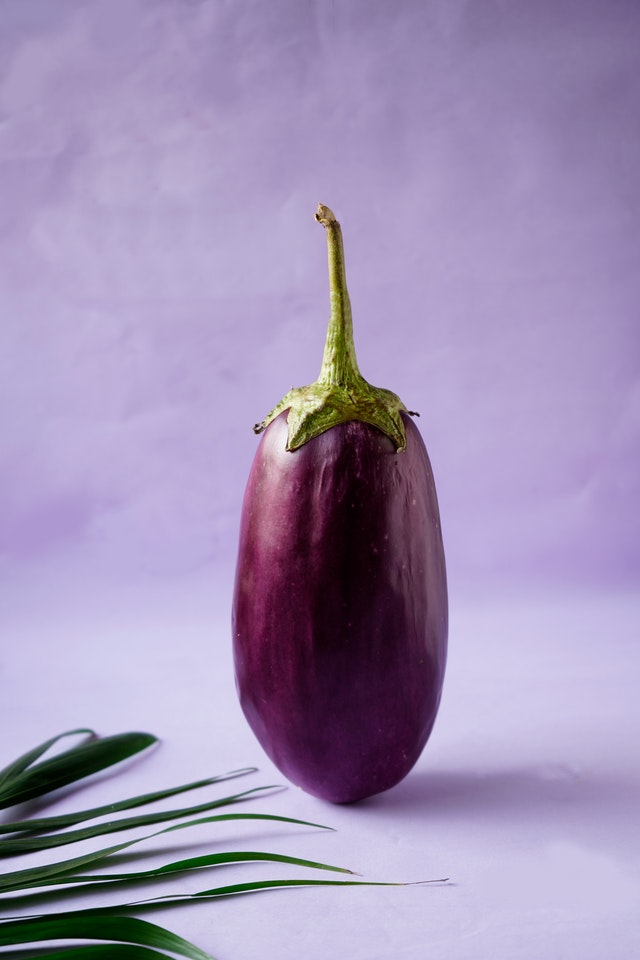
- The plant is compact – it does not fill the entire surrounding space. Plant height no more than half a meter.
- A good early maturity – 90 – 105 days. At this time there will be at least 10 corms on the plant. Their average size is 300mm in length and 50mm in diameter. They lie well in the hand when harvesting.
- The appearance of the fruits of this type of eggplant is even in size, dark purple in color, long and slightly glossy.
- The flesh of the fruit is tender and compact with few seeds.
- Taste with characteristic eggplant flavor.
- This type of eggplant is not only suitable for current cooking, but also for canning and pickling.
White eggplants
- Has a white rind.
- Almost has no seeds.
- White flesh without bitterness, tastes like mushrooms or chicken.
- The color of the eggplant is milky white.
- The fruits are cylindrical in shape. Weight 200-250gr.
- Tender flesh with mushroom flavor.
- This kind of eggplant is not only suitable for current cooking but also for canning and marinating.
Lilac eggplants
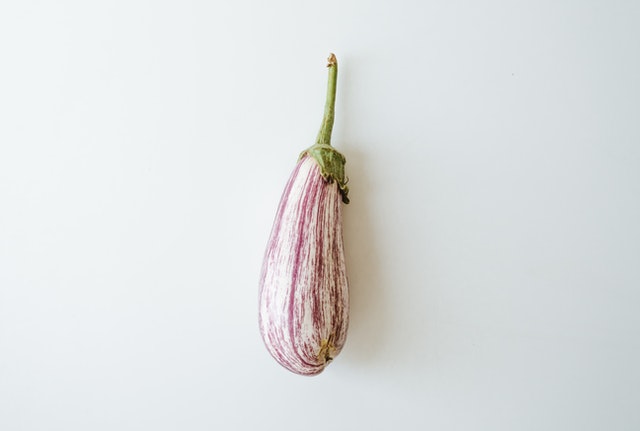
- Compact plant. A bush not more than 60cm tall.
- Fruits have an elongated cylindrical shape.
- The surface is lilac.
- Weight 150-250 grams.
- Fruits are white and dense when cut.
- Used for all types of dishes and canning.
- This type of eggplant is bred from the purple and white species of the crop. The striped and pink and white eggplant species are similar in characteristics to the lilac species.
Green eggplants
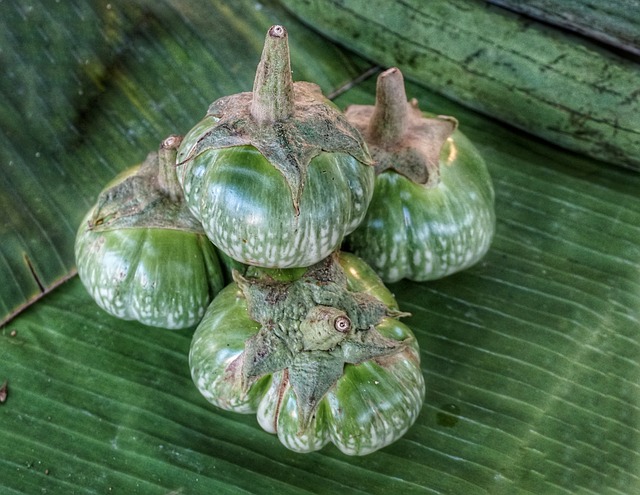
- Green pear-shaped fruits.
- Weight 250-300 grams.
- Flesh contains no bitterness.
- Inside white, slightly greenish color.
- Faint taste of natural mushrooms.
- This type of eggplant is common in Southeast Asia. In Europe and the United States, green eggplants are called “Thai” eggplants. In China, the fruits of green eggplant are light green in color and turn golden-bronze when ripe.
Yellow eggplants
This type of eggplant was bred in Holland.
- Oval shape of the fruit.
- Yellow in color.
- Flesh is high in carotene.
- Otherwise similar to other traditional eggplants.
Orange eggplants
- Orange eggplant is called Turkish eggplant.
- Origin African or Middle Eastern.
- Orange-striped coloration, appears at maturity.
- The fruit is small in size.
- The young fruits of this type of eggplant are green and fragrant, with no bitterness. But as they gain color, they become bitter.
- The fruit contains a substance called lycopene, which is used to make anti-tumor drugs.
Red eggplants
- They look like small tomatoes or pumpkins.
- Cultivated for their small fruits and as an ornamental plant.
- Plant as a sprawling shrub.
- Its leaves and trunk, covered with sparse thorns, are often maroon or purple.
- The fruits are similar to jalapeño peppers when cut. They are quite edible. When ripe, they may become bitter.
Eggplant Varieties
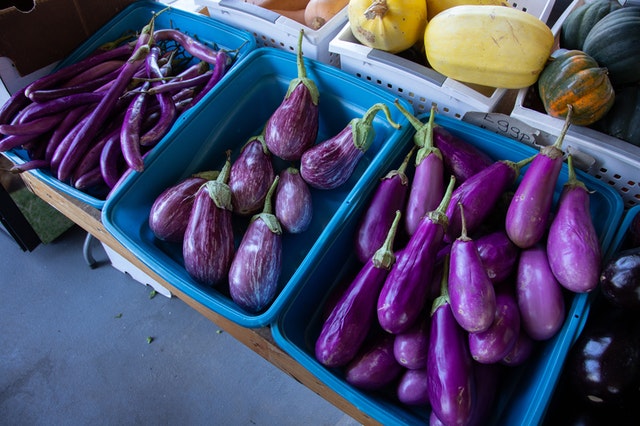
An oblong, purple-colored fruit, one of the traditional varieties of eggplant. But in today’s world, scientists have long since moved away from traditionalism and are creating new varieties of the crop.
Robin Hood – very early (90-100 days). Fruits weigh 200-300 grams. Spikes are weak.
Lunar – early, the fruit 300-317 g. The flesh is dense, yellowish-white.
Matusik-early, the fruit with lilac and white stripes, weight 143g, without bitterness. The flesh is white.
Caprice – early maturing (95-105 days), productive. Fruits weigh 180-200 g, without bitterness.
Prince – early maturing (95-104 days). Fruits weigh 150-200 g, without bitterness.
Caviar – medium-early. Fruits weighing up to 250-300 grams. The flesh is tender, the seeds are formed late. The yield is 1.5-2.5 kg per plant.
Ping-pong‘- a medium-early medium-high yielding hybrid. The fruit spherical shape (90-95 g). Yield up to 1.5 kg per plant. Color white, slightly glossy. The flesh is dense, without bitterness.
Tuzka – medium-early (120-130 days), with high adaptability. Fruits weigh 500-900 g. The thorns are very rare.
Romantic – medium-early (120-130 days). Fruits weigh 180-280 g.
Filimon – medium early (115-125 days). Fruits weigh 500-1000 g, very tasty. Spikes are rare.
Polundra – medium-ripening (115 days) variety. The plant is medium-grown, the calyx without spikes. Average mass of the fruit 225 g.
Baikal is a mid-maturing and strong-growing (1.2 m) hybrid, recommended for film greenhouses. Fruits pear-shaped (length 14-18 cm, diameter 10 cm), dark purple, glossy, weighing 320-370 g. The flesh is white, with a green hue, without bitterness, medium density. The yield per plant is 2.8-3.2 kg.
Torpedo is a medium-maturing (130-140 days) variety. Fruits weigh 150-200 g, without spikes, few seeds.
Galich – medium-maturing (110-145 days). The fruit is cylindrical in shape, weighing 150-200 grams. The flesh without bitterness.
Black opal – medium maturity (125-128 days). Weight of the fruit 150-210 grams. Flesh without bitterness.
Albatross – medium maturing, large-fruited, high yielding fruit. The flesh without bitterness. Color at maturity blue-purple, when ripe – brownish.
Bibo-a medium-ripening, snow-white fruits (300-400 g).
Delicate-white color of fruits. The term of maturity is medium. The plant height of 50 cm, length of fruit – 18 cm, the average weight – 200 g. The flesh is dense, white, no bitterness, with reduced solanine content. Yield per plant – 2 kg.
Snowy – snow-white fruits, medium maturity (105-110 days). Fruits are aligned, cylindrical shape, length 20 cm, diameter 6,5-7,5 cm, smooth, glossy, with delicate skin. The flesh of the fruits without bitterness, white.
Taste of mushrooms – roasted has a real mushroom flavor. Medium maturity (95-105 days). The height of 50-70 cm. The fruits are white cylinder shape or slightly pear-shaped, weighing 200-250 g. The flesh is milky-white, without bitterness, with a delicate mushroom flavor, the skin is thin.
Sadko-fruits are purple, with white longitudinal stripes. The plant is medium-sized (50-60 cm), medium ripening. Shape of fruit pear-shaped (length 12-14 cm, diameter 6-10 cm), the average weight of 250-300 g. The flesh of medium density, without bitterness, of excellent taste.
Baron– hybrid height 70-80 cm average maturity date. The fruits of the cylinder shape (length 16-22 cm, diameter 6-8 cm), dark purple, glossy, large – 300-350 g. The flesh of the average density, yellowish-white, without bitterness. The yield per plant is 2.8-3.1 kg.
How to Choose Eggplants. How to Know if an Eggplant is Spoiled?
Good quality eggplants have a characteristic pleasant taste, sometimes similar to mushrooms.
Eggplants can be divided into male and female varieties. Male varieties taste better and rarely contain bitterness. But female fruits have a lot of seeds – and they give bitterness.
You can distinguish these vegetables by the base: female fruits clearly visible oval indentation, and the male fruits rounded base. The number of seeds can be determined by comparing the weight of the eggplant. If heavy – a lot of liquid and seeds.
What to look for when choosing an eggplant:
- should be firm and not squeezed when pressed;
- The stalk must be green (the stalk is the place of the upper broad part of the fruit with the sepals and the tail);
- The color of the skin must be uniform and without spots, only eggplants with striped skin (peculiarity of the variety) may have an uneven color;
- the surface of the eggplant should have a characteristic sheen (a very glossy skin may be the result of treatment with substances to extend the shelf life);
- the weight of the eggplant should be felt in the hand, it is better not to buy light eggplants;
- Eggplants should be of medium size;
- Eggplant must be dry;
- If there are wrinkles on the surface it is a sign of “old age” (the skin of such a vegetable will be thick and the taste will be bitter);
- Brown or withered stalks indicate long storage of the eggplant;
- brown spots on the eggplant also occur when the vegetable is overripe (when it is infested with pests);
- Eggplants with cracks, dents or damage should not be purchased (the taste of such vegetables may be more impaired);
- do not buy eggplants without stalks (such eggplants may have been harvested unripe or the dried stalk may have been removed on purpose to show the old vegetable as a young fruit);
- Eggplants with brown skin should not be bought (there is no variety with this shade, and its presence indicates the beginning of rotting);
- slippery skin – the eggplant is spoiled;
- If the eggplant is soft, the rotting process has already started inside it or the vegetable is too overripe;
- a good eggplant without seeds and veins inside, does not darken quickly when cut, with white flesh.
Eggplant Slicing Options
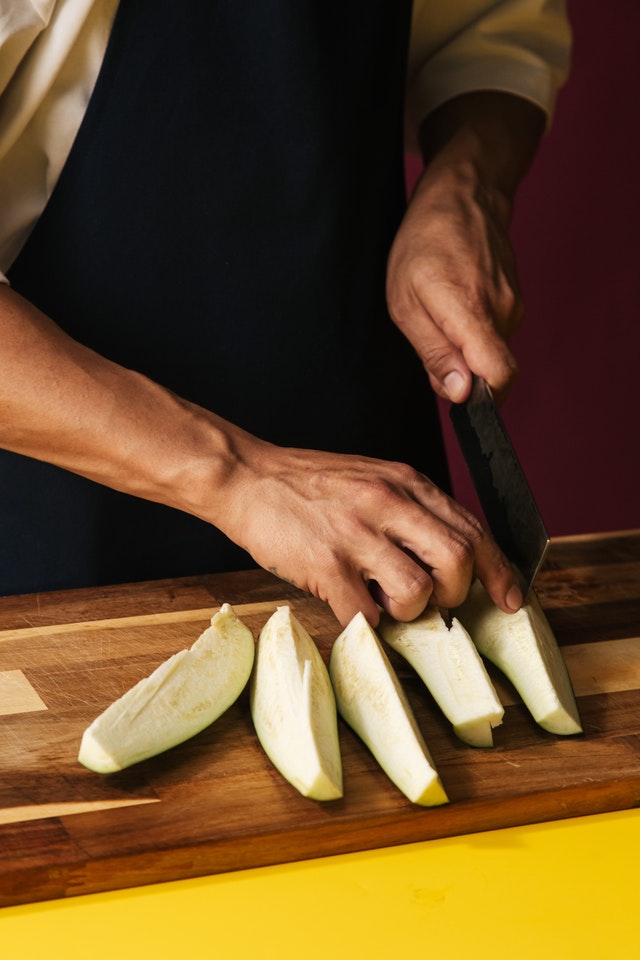
1. Slices and slices
- Cut the stalk and the tip of the eggplant
- Cut into slices, choosing the thickness required for the dish
- For slices, cut the eggplant slices into four parts.
2. Dice and slices
- Cut the stalk and the tip of the eggplant,
- Cut the fruit crosswise,
- cut each part into slices, then into slices,
- and now into cubes of equal thickness.
3. Plates
- Cut the stalk and the tip of the eggplant,
- cut the fruit lengthwise into thin slices.
How to Store Eggplants?
Eggplants do not withstand long storage.

Ways to store eggplant
At room temperature
The shelf life of eggplant at room temperature is 5-7 days.
To keep eggplant fresh, you need to consider:
1. Keeping vegetables in the light is prohibited (leads to the production of solanine).
2. If stored indoors at temperatures above 6º C (42.8 °F), gray rot appears on the surface of the vegetables. Temperatures above 20º C (68 °F) will cause the vegetable to change color and taste worse.
3. Storing eggplants at temperatures as low as 2º C (35.6 °F) keeps them almost in their original condition for 3 weeks.
Young eggplants with a deep dark purple color and a smooth, firm and shiny skin are suitable for long-term storage. You should not wash the vegetable – gently wipe with a dry cloth.
A small amount of eggplant is well preserved if wrapped in paper and placed in a single layer in a box.
In the refrigerator
Eggplants should be stored separately in the refrigerator. In an unsealed package (a bag or a bag of paper). Eggplants can only keep 3-5 weeks in a regular refrigerator, depending on the ripeness of the fruit. In refrigerators with no frost systems, vegetables can stay fresh for 1-2 months.
Storing eggplant in the freezer
If the eggplant is simply sliced, and packaged in bags and containers, send it to the freezer. Then defrosting it a few months later, you get something inedible, resembling rubber in texture.
The optimal temperature for vegetables in the freezer is -12ºC (10.4 °F) or lower. Under these conditions, the product will retain its taste, nutritional and structural properties for 5 months.
Freeze eggplants in a separate freezer compartment. The fruit has a peculiarity – not having a pronounced smell, they absorb all the extraneous flavors.
Freezing eggplants
Eggplants should be frozen only after they have been soaked, roasted, or blanched beforehand.
Preparing the eggplant for freezing
To ensure that the eggplant remains as tasty after defrosting, you need to prepare the vegetable before freezing:
- remove the stalks and rinse the vegetable thoroughly,
- then cut it into pieces,
- put them in a bowl,
- add a little salt and completely fill with water,
- after 30 minutes, drain the water and rinse under running water,
- and then put them in boiling water for 30 seconds,
- after cooling, dry the eggplants on paper towels,
- after 3-4 hours you put the slices into shallow containers and put them in the freezer for 5 hours,
- after 5 hours, take them out and pack them in bags,
- then put in the freezer for long-term storage.
Methods for Cooking Eggplants
Young eggplants can be cooked in many ways: boiled, stewed, fried, baked, stuffed, salted, pickled, grilled, and dried. Eggplants are also eaten fresh in their native land. Don’t cut the skin off the eggplant, it contains a lot of useful substances.
Before cooking, use a knife to remove the stalk along with the tip of the eggplant by 1 cm. In this place nitrates accumulate. The right thing to do is to boil the eggplants for 15 minutes in water, which should be drained. And then you can already prepare some dish.
Blanching
- You slice or dice the eggplant,
- soak them in salt water for at least an hour,
- you dry them and then you put them in boiling water for a couple of minutes,
- then immediately put the pieces in ice water,
- then pieces are dried on a towel, getting rid of unnecessary moisture (if you don’t dry them you can spoil the taste of the product).
Roasting

- Vegetables are better cut into rings, so it is convenient to turn them,
- fry the products in a preheated frying pan with a minimum amount of vegetable oil,
- processing is carried out until the slices are soft.
Baking

You can bake them as a whole, or cut into portions.
- Grease a baking pan with vegetable oil,
- put the vegetables on it,
- then put them in a preheated oven for half an hour.
Drying
Eggplant can be dried in an electric dryer for 7-8 hours.
To dry in the oven:
- You spread the vegetables on a baking tray in a single layer,
- you put them in an oven heated to 200 degrees,
- every 10 minutes it is necessary to open the door ajar,
- the total drying time is about 6 hours.
To dry outdoors:
- Eggplants are either threaded or placed on surfaces in a single layer,
- it is important that the sun’s rays do not reach the rings, otherwise the vegetables will instantly turn into poison,
- such drying takes up to 3-4 weeks.
Dried eggplants can be stored for 6-8 months in an airtight container or textile bag.
How to reduce the amount of harmful substances in eggplant?
1. The amount of solanine is significantly reduced if you salt the sliced eggplants, wait until they release juice, and rinse with water. Together with the juice comes out the bitterness – this is the solanine.
2. The second way: soak eggplants in salt water for 20 minutes.
3. Roasting and cooking automatically reduces the amount of nitrates: roasting – by 10%, cooking for 15 minutes – 60%.
Eggplant Recipes Ideas
Eggplant combines with many products: it is suitable not only for main dishes, but even for desserts. Eggplant goes well with other vegetables, especially tomatoes and zucchini, with cottage cheese and cheese, with all kinds of meat and fish. Basil, garlic, thyme, rosemary, tarragon, coriander and coriander are great spices.
1. Fan baked eggplant and tomatoes
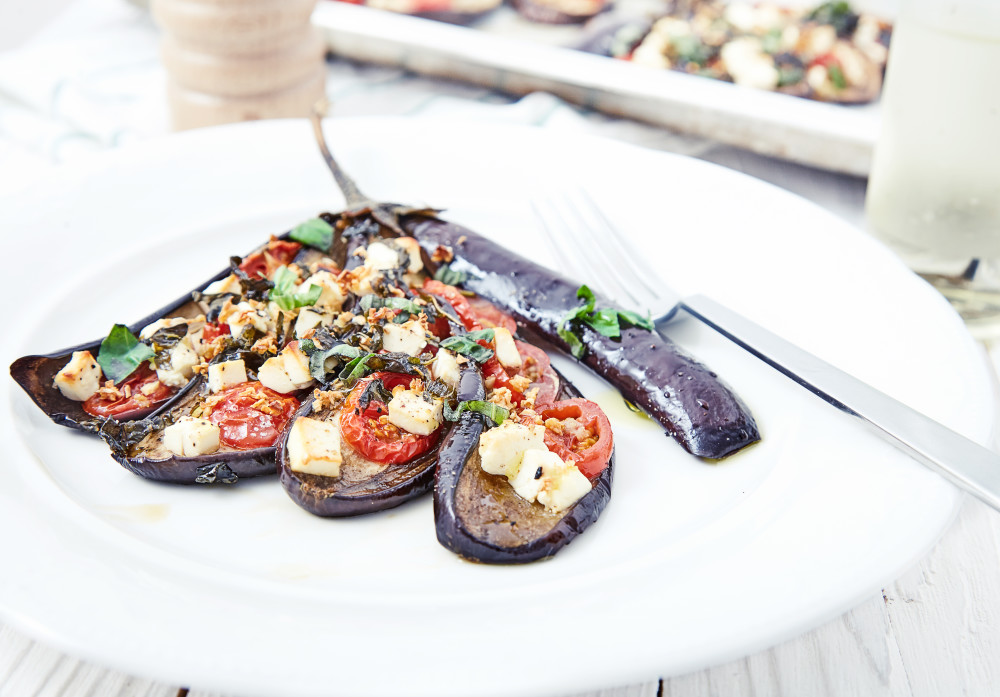
A beautiful serving of this dish, will delight you with the juiciness and flavor of the eggplant. And the easy and quick preparation, will make it a favorite on your table.
2. Spicy eggplant salad

If you like your dishes “spicy,” you’ll love this option for serving eggplant. The onions can be added raw or you can pickle them a little. Then you can add a little sourness to the salad.
3. Eggplant rolls with walnuts, soft cheese

Eggplant rolls are a popular dish. But the filling for them you can choose your own taste. Walnuts can be replaced by a piece of tomato, ham or add mushrooms.
4. Baked eggplant caviar
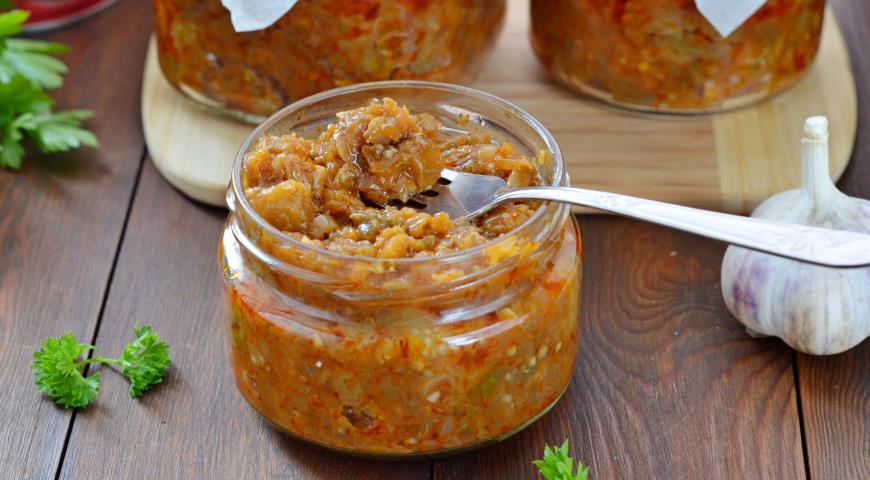
A traditional eggplant dish. Useful, tasty, dietary, varies any menu. It can be used as an independent dish or as a side dish.
5. Stuffed eggplant curry

A true vegetarian meal. Spicy flavor. The little eggplants filled with stuffing will whet an incredible appetite. Any side dish will complement this dish.
6. Eggplant salad with pistachios

Quick, easy and original. Eggplant can be grilled or roasted in a dry pan. The dish looks beautiful and appetizing in layers.
7. Tomato and eggplant soup
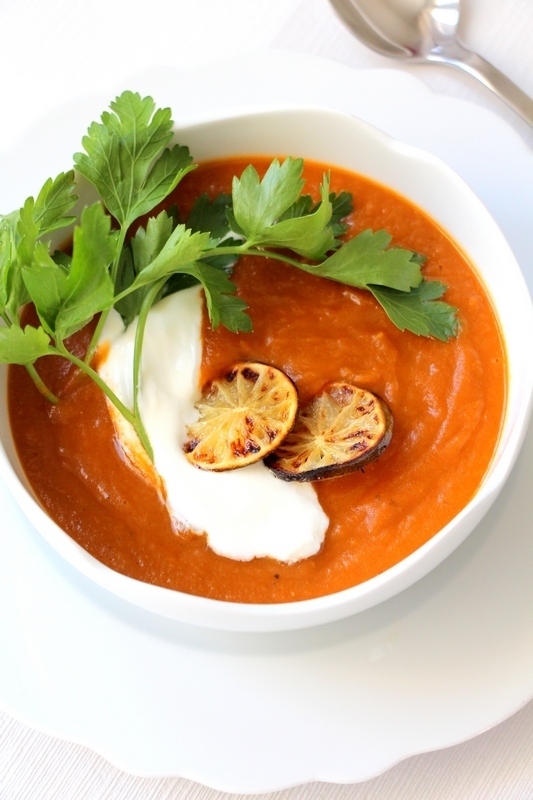
Try an unusual eggplant puree soup. The tomato flavor gently complements the flavor of the eggplant, and the peppers add spice. Autumn is the best time for this dish.
8. Sichuan eggplant

Crispy eggplant covered in a sour-sweet, tangy and slightly spicy sauce. A popular dish in Beijing. Insanely flavorful sauce, makes this dish unique. This kind of sauce can be used with fish dishes.
9. Eggplant stuffed with quinoa and chickpeas
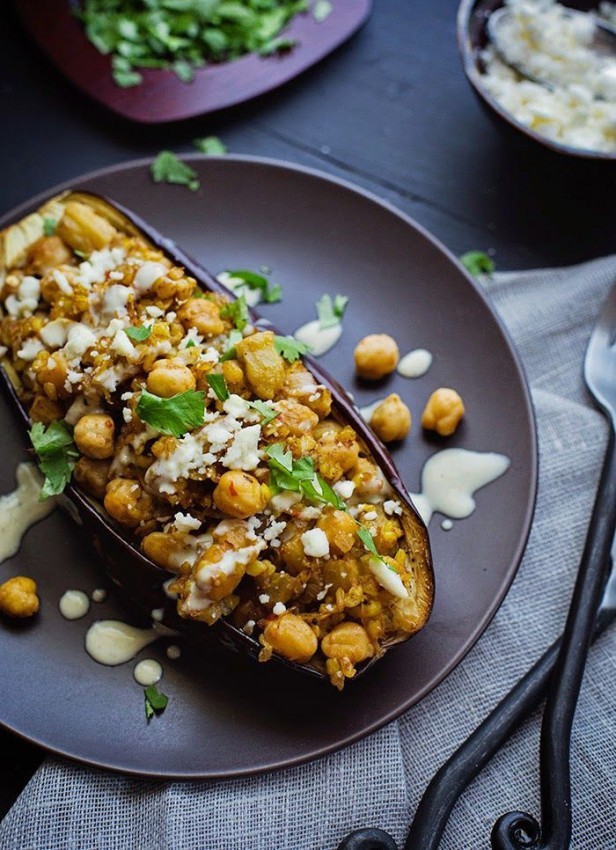
Unusual and exquisite serving of eggplant, will surprise any foodie. Quinoa is an unusual cereal, if you do not have it on hand, replace it with couscous or millet. The usefulness of this dish is off the charts.
10. Grilled eggplant, zucchini and pepper salad

Grilled vegetables. A healthy appetizer for any table. Goes well with grilled meat dishes. Can be used as a separate dish.
11. Eggplant croquettes
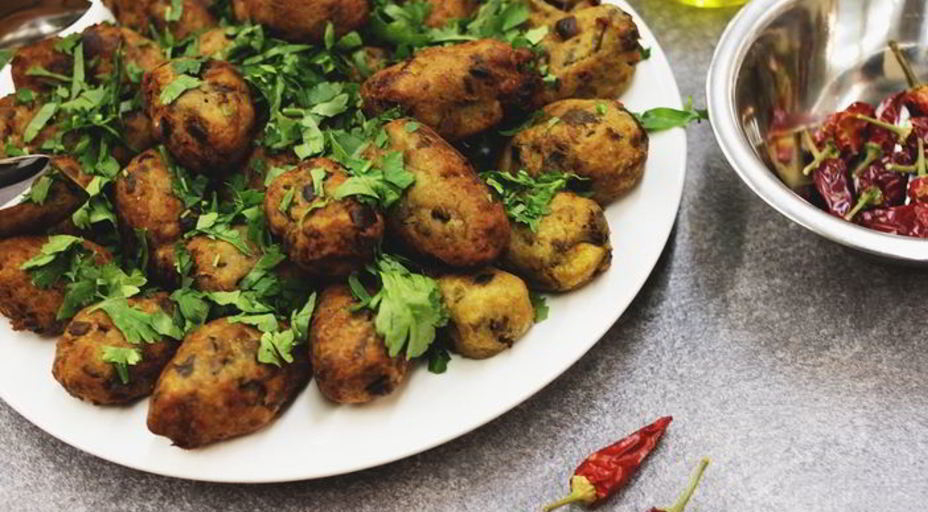
The appetizing crispy crust of the croquettes is sure to please and surprise you. You fry the dish in a deep fryer. Be sure to serve the croquettes hot, as an appetizer to meat or fish dishes.
12. Eggplant dessert with prunes
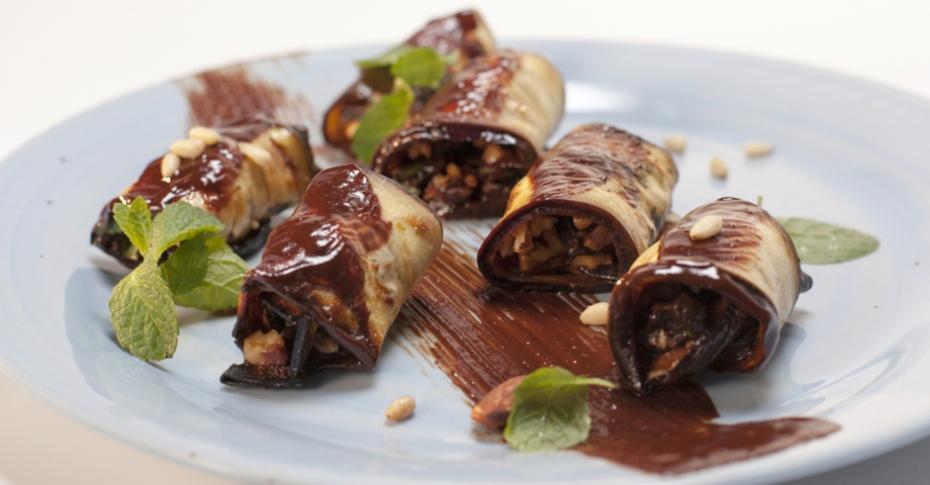
An extraordinarily delicious way to prepare eggplant. Surprise your loved ones with this dessert. The prunes can be replaced with dried apricots. Cognac can be left out or replaced with rum.
13. Eggplant dessert neapolitan style

Chocolate eggplant. A delicate dessert. You can substitute almond cookies for any hard dry cookie. Instead of candied fruit add finely chopped marmalade. The exquisite taste of this dessert will definitely make you happy.
